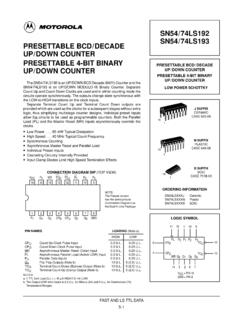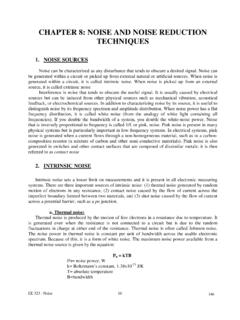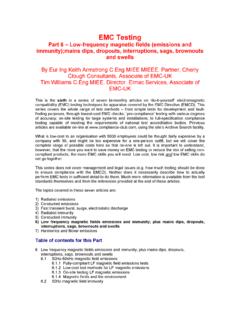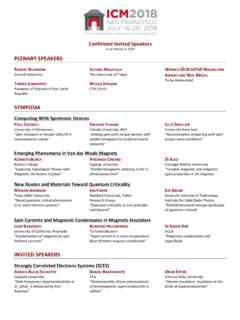Transcription of Velocity Encoding and Flow Imaging - USC Ming Hsieh ...
1 1 Velocity Encoding and Flow Imaging Michael Markl, University Hospital Freiburg, Dept. of Diagnostic Radiology, Medical Physics, Freiburg, Germany Introduction MRI techniques provide a non-invasive method for the highly accurate anatomic depiction of the heart and vessels. In addition, the intrinsic sensitivity of MRI to flow, motion and diffusion offers the possibility to acquire spatially registered functional information simultaneously with the morphological data within a single experiment [1-13, 16-19, 31, 36, 38].
2 Characterizations of the dynamic components of blood flow and cardiovascular function provide insight into normal and pathological physiology and have made considerable progress in recent years [14-15, 24, 26-29, 35, 55]. Theory - Velocity Encoding Most MR-sequences demonstrate more or less significant sensitivity to flow and motion, which can lead to artifacts in many applications. The intrinsic motion sensitivity of MRI can, however, also be used to image vessels like in phase contrast MR-angiography but also to quantify blood flow and motion of tissue.
3 Based on the fact, that the local spin magnetization is a vector quantity, in addition to magnitude data phase images can be extracted from the measured MR signal. Using appropriate Velocity Encoding gradients flow or motion dependant phase effects can be used to measure two datasets with different Velocity dependant signal phase at otherwise identical acquisition parameters. Subtraction of the two resulting phase images allows the quantitative assessment of the velocities of the underlying flow or motion [18].
4 The phase dependency of the MR-Signal to moving spins can be derived from the precession frequency of spins in local magnetic fields. The Larmor frequency L of spins at the spatial location rr in a static magnetic field B0, local field inhomogeneity B0, and an added magnetic field gradientrG is given by: 00( , )( , )() ()LzrtB rtBBrtGt ==+ +rrrrMain fieldConstant, zero for rotating ref. frameLocal fieldStatic,susceptibility gradientTime dependent & spatially varying with 0,0LB = (1) = gyromagnetic ratio Fig. 1: Longitudinal (Mz) and transverse (Mxy) spin magnetization in blood or tissue.
5 Magnitude and phase images can be derived from the length and orientation of the transverse magnetization. In combination with appropriate Encoding gradients, phase images are motion sensitive and can be used to directly measure the local velocities of moving spins on a pixel-to-pixel basis. 2 After signal reception the acquired FID is demodulated with respect to the Larmor frequency 0,L in the static magnetic field B0. This corresponds to a transformation of the MR-Signal into a rotating reference frame such that the main field contribution to the signal frequency can be omitted for further calculations.
6 Integration of equation (1) results in the phase of the precessing magnetization and thus the phase of the measured MR signal after an excitation pulse (at t0) at echo time TE: + == TEtTEtLdttrtGtTEBdttrtrTEr00.)()()(),(), (),(000rrrrr (2) which can be expanded in the following Taylor series: ,))((!),()(),(),(00)(00)(0000 = = +=+ +=nTEtnnnnndttttGnrTErtTEBtrTErrrrrr (3) with rn() being the nth derivative of the time dependant spin position and n the corresponding nth order phase.
7 Initial signal phase and field inhomogeneities result in an additional background phase 0 . If the motion of the tissue under investigation does not change fast with respect to the temporal resolution of data acquisition the corresponding velocities can be approximated to be constant during data acquisition, echo time TE. Thus rrt( ) can be introduced as first order displacement ..)()(00+ +=ttvrtrrrr with a constant Velocity ))(),(),((000rvrvrvvzyxrrrr=. Equation (3) then simplifies to 0000( ,)( )d( ) Gt tv Gttt =+++ rrrrr (4) M0static spinsM1moving spins++.
8 Gradientmoments: including an unknown background phase 0 and zero and first order components which describe the influence of magnetic field gradients on phase components of static spins at 0rr and moving spins with velocities vr, respectively. The integrals describing the contribution of the magnetic field gradients are also known as nth order gradient moments Mn such that the first gradient moment M1 determines the Velocity induced signal phase for the constant Velocity approximation. As a result, appropriate control of the first gradient moment can be used to specifically encode spin flow or motion.
9 Velocity Encoding is usually performed using bipolar gradients as depicted in figure 2, which, according to equation (4), result in zero M0 and thus do not lead to any phase Encoding of stationary spins. Moving spins, however, will experience a linear Velocity dependant phase change, which is proportional to the amplitude and timing of the gradient. According to equation (4) Velocity induced phase shifts can be controlled by adjusting the 3first gradient moment M1 by varying total bipolar gradient duration T and/or gradient strength G and are given by (simplified gradient design without ramps): vTGvMv211)2/()( = = (5) However, background phase effects 0 due to susceptibility of field inhomogeneity can not be refocused using bipolar gradients.
10 To filter out such phase effects, two measurements with different first moments M1(1) and M1(2) ( inverted gradient polarities) are thus necessary to isolate the Velocity encoded phase shifts and encode flow or motion along a single direction. Subtraction of phase images from such two measurement results in phase differences which are directly proportional to the underlying velocities v and difference in first gradient moments M = M1(1) - M1(2). Since Fourier image reconstruction resolves signal amplitudes and phases as a function of spatial locations, the encoded velocities can simply be derived from the data by dividing the pixel intensities in the calculated phase difference images by M (figures 2 and 3).











